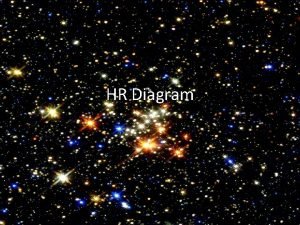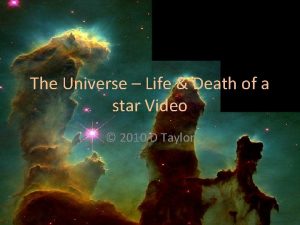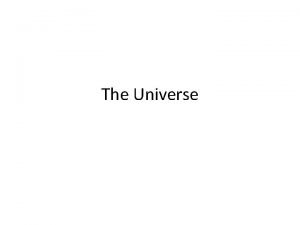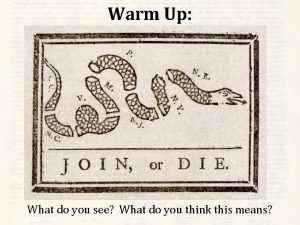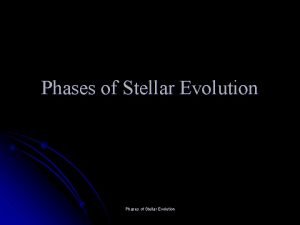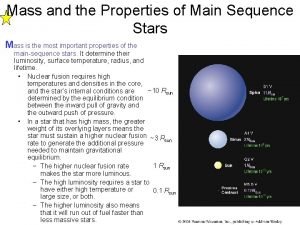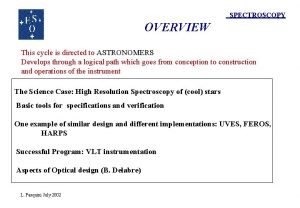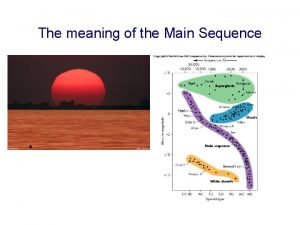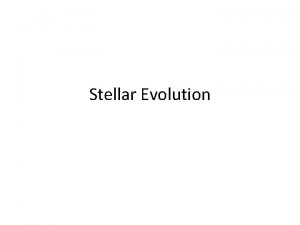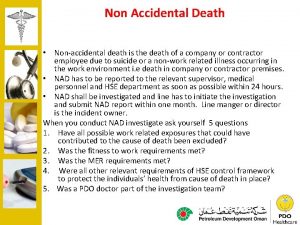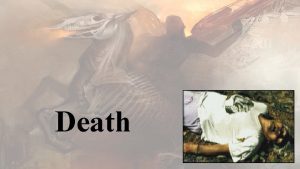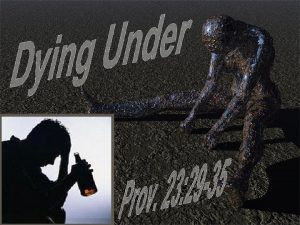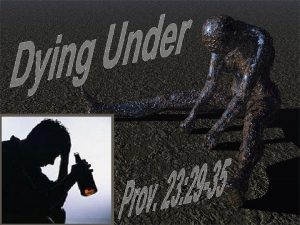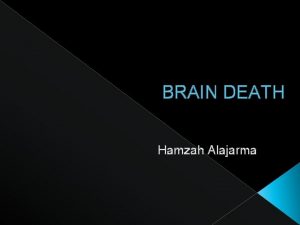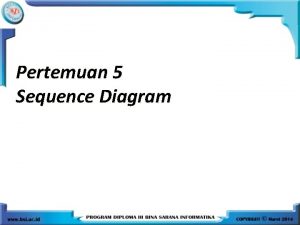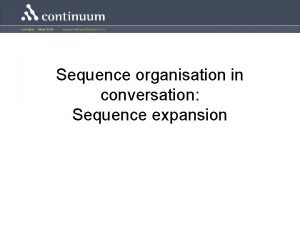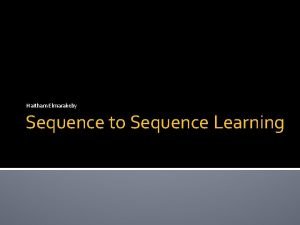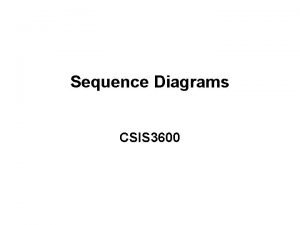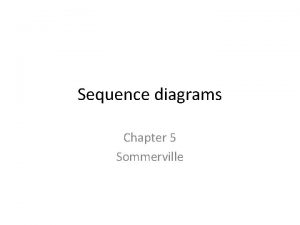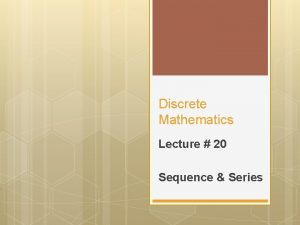STAR LIFE DEATH Life on the Main Sequence










































- Slides: 42

STAR LIFE & DEATH

Life on the Main Sequence

Life on the Main Sequence • Stable fusion: hydrogen helium • Accumulation of helium in core Steady increase in luminosity • 90% of star’s life spent on main sequence • More mass shorter MS lifetime

Main Sequence structure depends on mass. . . pgs. 276

Luminosity Low-mass stars: luminosity increases with age zero-age main sequence Sun Temperature

Change in composition of 1 solar mass star. Fusion ceases when core converted to helium – star now leaves main sequence.

Sun: ~ 10 billion years

Star Death I: Low Mass Stars (M < 8 M )

‘Evolutionary tracks’ Surface cools, core contracts & heats, radius expands. Red Giant p. 277

Sun as a red giant Vigorous H He fusion in shell drives envelope outward. Inert helium core (shrinking) p. 277

Red Giant: Aldebaran T = 3500 K L = 370 L R = 50 R M 3 M

* Core temp 100 million K: Helium fusion begins Another Helium Beryllium Gamma Ray Helium Carbon Gamma Ray

In addition. . . 12 C + 4 He 16 O + gamma ray

On the HR diagram. . . He ignition Core He exhaustion Horizontal branch Supergiant

Helium-burning, Horizontal Branch star p. 279

Supergiant Star Helium-fusing shell Hydrogen-burning shell Contracting carbon-helium core

* Supergiants lose mass: > Stellar winds > ‘Flashes’ in helium-burning shell Old stellar core Planetary Nebula Ejected stellar envelope Ring Nebula p. 281


p. 281

Hourglass Nebula Old stellar core shrinking to White Dwarf state.

The whole story. . . p. 280

Star Death II: High Mass Stars (M > 8 M )

High temp. , rapid fusion on CNO Cycle Again. . . hydrogen fusion ceases when core converted to helium – star now leaves main sequence.

Multiple core fusion stages are possible. core re-ignition core exhaustion p. 283

For a 25 M star: Core Fusion Core Temp Duration H fusion 40 million K 7 million yr He fusion 200 million K 500, 000 yr Carbon fusion 600 million K 600 yr Neon fusion 1. 2 billion K 1 yr Oxygen fusion 1. 5 billion K 6 mos Silicon fusion 2. 7 billion K 1 day results in Iron

As fusion ceases. . . ‘Onion Skin’ p. 283

Fusion ceases when iron is produced. . . p. 284

Iron core contracts, heats Nuclei disintegrate Protons absorb electrons: proton + electron neutron + neutrino Core stiffens, bounces back slightly Core bounce + neutrino flow ejects envelope: SUPERNOVA!

Elements heavier than iron created in blast.

Supernova 1987 A Before After


SN 1987 A in 1999 SN ejecta Stuff ejected before SN.

SN blast wave reaches inner ring

SN 1987 A proton + electron neutron + neutrino (deep underground) Neutrino arrival

SN probably occur ~ once per 100 yrs in our galaxy.

600 mi/s Crab Nebula Supernova Remnant (Exploded 1054 AD) Pulsar (rotating neutron star) Visible in broad daylight for 23 days in July, 1054!

". . In the 1 st year of the period Chih-ho, the 5 th moon, the day chi-ch'ou, a guest star appeared south-east of Tien. Kuan [Zeta Tauri]. After more than a year, it gradually became invisible. . "

Supernova recorded at Chaco Canyon, NM?

Cygnus Loop ~13, 000 BC

Vela Supernova Remnant (~10, 000 BC) Interstellar medium ‘seeded’ with heavy elements.

Cassiopeia A Supernova Remnant Neutron star? Black hole? X-ray

Iron Cassiopeia A Supernova Remnant Silicon
 Myrrh is mine its bitter perfume
Myrrh is mine its bitter perfume High mass main sequence star
High mass main sequence star Hr diagram
Hr diagram Where does joshua barnes think they come from
Where does joshua barnes think they come from Star life cycle from birth to death
Star life cycle from birth to death Star life cycle from birth to death
Star life cycle from birth to death Star life cycle from birth to death
Star life cycle from birth to death Hananel hazan
Hananel hazan What does star events stand for
What does star events stand for Somatic death vs molecular death
Somatic death vs molecular death Star pattern torque sequence
Star pattern torque sequence What is the main idea of give me liberty or give me death
What is the main idea of give me liberty or give me death Amino acid nucleotide
Amino acid nucleotide Selection pseudocode
Selection pseudocode Differentiate finite sequence from an infinite sequence
Differentiate finite sequence from an infinite sequence Convolutional sequence to sequence learning.
Convolutional sequence to sequence learning. Zero age main sequence
Zero age main sequence Properties of main sequence stars
Properties of main sequence stars Primordial nucleosynthesis
Primordial nucleosynthesis Main sequence meaning
Main sequence meaning Future time will and going to
Future time will and going to Main ideas examples
Main ideas examples Void main int main
Void main int main Hình ảnh bộ gõ cơ thể búng tay
Hình ảnh bộ gõ cơ thể búng tay Bổ thể
Bổ thể Tỉ lệ cơ thể trẻ em
Tỉ lệ cơ thể trẻ em Voi kéo gỗ như thế nào
Voi kéo gỗ như thế nào Chụp tư thế worms-breton
Chụp tư thế worms-breton Chúa yêu trần thế alleluia
Chúa yêu trần thế alleluia Môn thể thao bắt đầu bằng chữ đua
Môn thể thao bắt đầu bằng chữ đua Thế nào là hệ số cao nhất
Thế nào là hệ số cao nhất Các châu lục và đại dương trên thế giới
Các châu lục và đại dương trên thế giới Cong thức tính động năng
Cong thức tính động năng Trời xanh đây là của chúng ta thể thơ
Trời xanh đây là của chúng ta thể thơ Mật thư anh em như thể tay chân
Mật thư anh em như thể tay chân Phép trừ bù
Phép trừ bù Phản ứng thế ankan
Phản ứng thế ankan Các châu lục và đại dương trên thế giới
Các châu lục và đại dương trên thế giới Thể thơ truyền thống
Thể thơ truyền thống Quá trình desamine hóa có thể tạo ra
Quá trình desamine hóa có thể tạo ra Một số thể thơ truyền thống
Một số thể thơ truyền thống Cái miệng xinh xinh thế chỉ nói điều hay thôi
Cái miệng xinh xinh thế chỉ nói điều hay thôi


